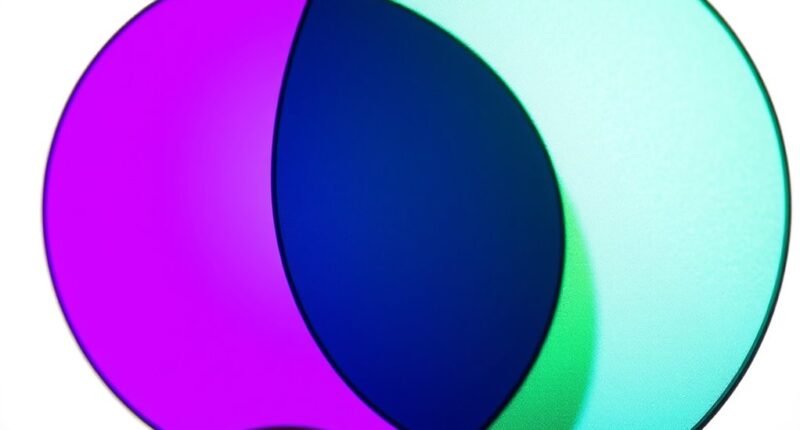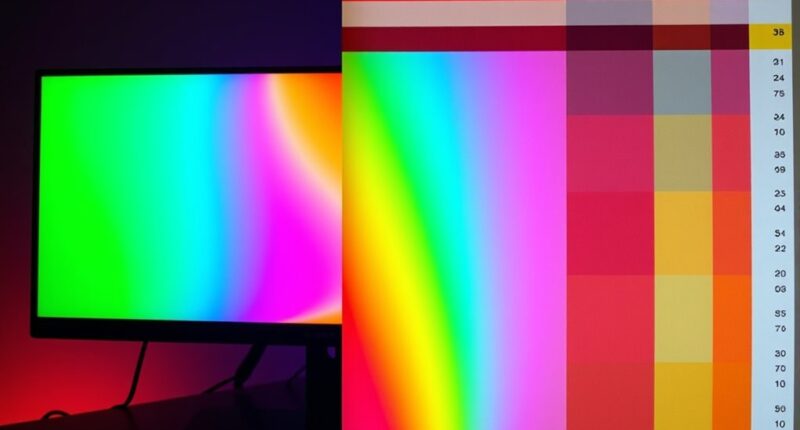Understanding Addison’s Paradox reveals how combining negatives can create surprising brightness, leaving you wondering how perception tricks your eyes.
Browsing Category
Color Science & Theory
7 posts
Opponent‑Process Theory: How Your Brain Decodes Color
Learning how your brain decodes color through opponent-process theory reveals the fascinating mechanisms behind your vivid visual experiences.
CIE XYZ Explained With Jellybeans (Seriously)
Never underestimate how jellybeans can make understanding the CIE XYZ color space surprisingly simple and fun—discover the colorful science behind perception.
Metamerism: The Sneaky Reason Your Outfit Mismatches in Sunlight
Metamerism is the sneaky reason your outfit seems mismatched in sunlight or…
Chromatic Adaptation: Why White Walls Look Yellow at Night
At night, your eyes adapt to warm-toned lighting, like incandescent bulbs, which…
Spectral Power Distribution Charts—What Those Spikes Really Mean
By understanding the spikes in spectral power distribution charts, you can uncover what they reveal about a light source’s color quality and performance.
RGB Vs CMYK: Why Your Prints Never Match the Screen
The colors you see on your screen are created with light using…










